When we first saw the EcoFlow DELTA, the timing was almost comical in that South Australia had just experienced significant and widespread power outages. Now the dust has settled on that, we’ve had a chance to take some time with the review unit, and; while it’s an expensive device, it’s quite an investment for many potential buyers.
So what is it?
Physically, it’s pretty hefty with the full kit (cables and cover), weighing just over 14kg, so it’s not something you’d carry daily. When you consider the weight and physical size — 40 x 21 x 27 cm — while it’s transportable, thanks to the built-in handles, I wouldn’t say it’s portable.
So why would someone consider a big, heavy, expensive battery like this?
Let me try to sell this to you…
When it comes to connectivity, there’s plenty to cover your devices. At one end of the device, you’ll find two USB-A, two USB-A fast charge ports and two USB-C ports. At the other end, you’ll find a 12V port and four power plugs for individual devices or even a power board if you want to run several lower power consumption items, although it’s recommended to run a single device per output.
On one side, there are a couple of fans to keep the package cool which is important when you’re potentially loading or utilising the batteries heavily. On the other side, there’s a flip-up door that reveals the power inlets for charging; solar, car and mains power.
One of the really useful features of the EcoFlow DELTA is the status screen. This provides some simple but handy insights into the unit’s status. At a glance, you can see how much power remains, the output and input at that moment, and — based on the current draw rate from the battery — an estimated remaining runtime.
In practical terms, it’s the biggest portable battery I’ve used in quite some time. But it’s a lot more than just a battery to charge your phone or tablet. The EcoFlow DELTA can charge your phone, laptop, tablet and headset while providing power to your fridge and coffee machine while camping or caravanning. It’s a surprisingly powerful device with plenty of power stored and the capacity to output that power to just about anything.
The actual specs are:
- 1,260Wh of stored power
- Charges — from mains power — to 80% in under an hour
- Can be charged from mains power, solar panels — optional extra — or 12V options
- Can power devices that draw 1,800W, or 3,300W surge
I can see this being hugely useful in several situations and settings. Whether it’s as a power backup for home, a camping power supply, for on-the-go power if you’re on the road a lot or even for options like caravan travels.
There are a few issues…
So this is pretty impressive generally, but some issues need to be acknowledged. One has already been mentioned earlier in the physical size and weight. The main one that has the potential to catch users out is power handling.
What I mean by that is that there’s no automatic power off for the DELTA, the power in managed through manual switches. On both ends of the battery, there are physical switches you need to turn on and off to handle your power output.
Issues aside, how does it go in daily use?
In the limited test — my availability, not a short timeline with the unit — time before publishing this review, I’ve given the EcoFlow DELTA a couple of good workouts. One day I went out to the local bike tracks, I took the DELTA with me to charge the likes of GoPro cameras, gave someone a bit of time to charge their drone, had an e-bike charging for a while and plenty of phones grabbing a quick top-up.
Because I can, I ran my coffee machine from the DELTA for a couple of cups with no issue at all. So this is viable if you’re going camping to ensure the continued health and safety of everyone with a caffeine supply.
The other was simulating a blackout and running my PC setup from the DELTA for a session. This included my PC, monitors, speakers, laptop and a couple of other peripherals charging during this time. Once I plugged everything in and hit the go button, there was nothing in performance that indicated to me that I was running from battery. During the sessions, around 30% of the battery was used and I’m confident that I could have gone for most of the day without recharging the battery.
Would I recommend the EcoFlow DELTA?
Given the cost, $2,399.00 at full RRP, currently $2,099.00, I’m sure this isn’t for everyone. Keep in mind that this is for the battery only. So if you’re trying to go ‘off grid’ with the EcoFlow Delta, you’ll be up for a further cost of $499.99 for the 110W solar panels, $599.00 for the 160W or $1,599.00 ($1,299.00 at the time of publishing) for the 400W option.
The versatility and overall capability of the EcoFlow DELTA lend it to being used across many areas of life. Whether you’re on the go a lot needing power without access to mains power, away from civilisation regularly or even going off grid. One pathway I hadn’t thought of was following a previous post about it, I have a few friends who’ve shared the cost, which gives them all some protection (minus transport time) against extended power outages.
While it can power a fridge and many other critical items to home life, it will not replace a home solar battery. As a general statement, though, it’s got such huge potential that I’m genuinely impressed with the capabilities delivered to users.
If you’re ready to get onboard now, you can pick up a DELTA or other models on special for Christmas and Boxing day.
Disclosure Statement
Due to shipping costs, EcoFlow have not requested return of the unit following review.

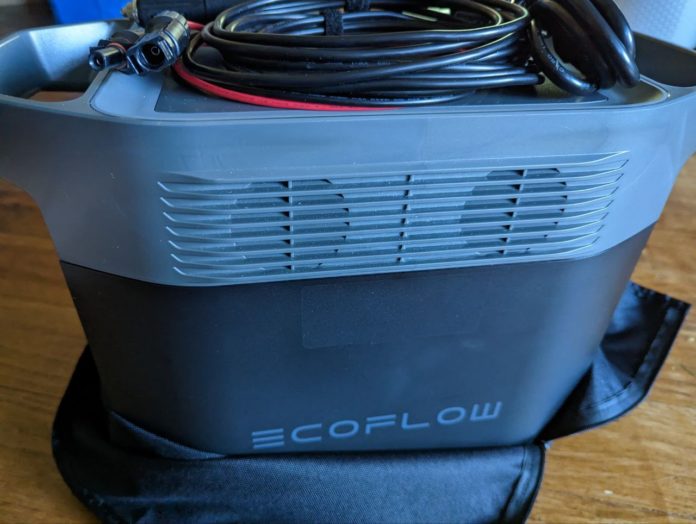

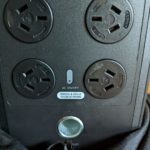
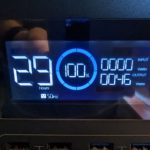
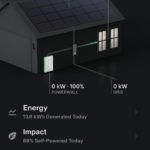
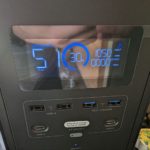
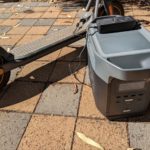
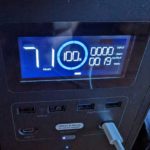




I really like the idea of that EcoFlow portable power station.
If one particular detail of it was changed, it looks like it could be a really good portable power supply setup for astrophotography. The change, a red coloured, dimmable, status display, so checking on the status of the unit, doesn’t wreck night vision.
You could always put some red cellophane over the display to help protect night vision.
Because the status display looks like it was designed from the outset as being a permanently full brightness, blue and white display, simply putting red cellophane over it won’t actually work, as the display itself is too bright, in addition to being a very poor colourset for maintaining night vision. It’s why I said the display needed to be fully redesigned to be red and dimmable.
It goes off after a while, even while charging. But I’m sure you understand your request is niche, hence my suggestion.